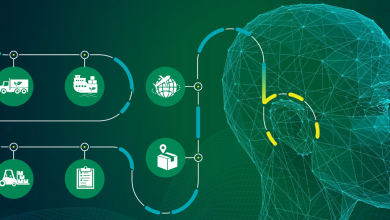Although the term ‘robotic process automation,’ also known as ‘RPA,’ has been a buzzword since the early 2000s, many companies have not implemented RPA for many reasons.
Some state that the license-based models are too costly to implement, while others are not ready to take on this form of digital transformation or, even further, unfamiliar with the concept.
According to one of the world’s leading RPA companies, UiPath defines robotic process automation as “a software technology that makes it easy to build, deploy, and manage software robots that emulate humans actions interacting with digital systems and software.”
This means that computers can and will perform basic human actions through automated scripts like navigating systems, extracting data, and performing actions based on a defined set of rules.
However, the benefit of having these so-called ‘robots’ do the work humans typically perform is that they can do it faster and more consistently.
This is a wonderful advantage in and of itself, but sometimes the drawbacks outweigh the benefits. As the concept of RPA evolves and changes, these drawbacks lessen, and the benefits grow. The following list describes things you may not know about RPA and how it could be favorable to implement automations at your company.
- Robots Don’t Have to Cost as Much as Human Employees
As RPA continues to evolve, the need in the market for the pay-per-license models is decreasing. Companies like OpenBots and RoboCorp are creating SaaS-based products, therefore allowing the users more flexibility. A new term has developed from this evolution, aptly named RPAaaS.
With this shift, the cost of using robots to do repetitive work decreases drastically.

This allows small and mid-sized companies the opportunity to reap the benefits of RPA while enterprise-level companies can allocate extra funds to give back to the company through investing more into the employees or customers themselves.
- Automations Can Be Developed Using Low-Code/No Code
With wider availability of RPA comes the next phase to benefit digital transformation, allowing the use of citizen developers to create automations.
Developing automations can be what is called ‘low-code/no code,’ meaning people who may not specifically be software developers but who understand the automation process and the company’s needs can develop automations that meet these needs.
This speeds up the development and delivery process, helping to meet the customer and employee demands faster.
Why Citizen Development Is Fundamental to Digital Transformation

- RPA is One Small Part of Digital Transformation
While RPA may be known to be synonymous with digital transformation, it is but one small part in helping make an organization successful in this dynamic market.
TechTarget labels driving forces of digital transformation like ‘artificial intelligence (AI), cloud computing, mobile technologies, social media platforms and next-generation technologies, such as the internet of things (IoT), edge computing and robotic process automation (RPA).’
Automation companies are now shifting to an RPA+ approach, allowing users to integrate applications to make the digital transformation process more seamless.
For instance, OpenBots has a platform of tools that integrate with external applications to allow users the flexibility and ease of ensuring a smooth transition toward to ecosystem of digital transformation.
- Automations Don’t Always Run in the Background
When hearing about automation for the first time, most think of robots running in the background of a computer or on a server and carrying out massive amounts of data processing. Although this is one way to utilize robotic process automation, it is not the only way.
Attended and unattended automations run very differently. Attended automations are what most expect, where processes are being done without a human’s help. Unattended automations assist a human and may even require human approval or input, also known as human-in-the-loop.
When beginning the digital transformation process, unattended automations may be more accessible as a starting point. However, attended automations can be just as if not more helpful. Using both types can dramatically increase productivity in the workplace.
- RPA Can Be Utilized by Any Industry
Robotic process automation thrives on processes that are rule-based and repetitive, but that doesn’t mean it can only be used for data processing in industries such as finance and accounting.
Human resources can use both attended and unattended automations to onboard and offboard clients. Retail companies can send receipts or manage their inventory. Customer support can utilize human-in-the-loop automations like chatbots. Healthcare can handle claims processing and documentation.
Case studies such as the ones listed on the OpenBots website show the range of industries where automations have been applied.
Scaling with RPA
With RPA companies now learning to adapt to meet the needs of its consumers, digital transformation will be feasible for many more organizations. As we move away from RPA to RPA+, organizations that incorporate such tools will be able to thrive in this ever-changing and unpredictable market.




